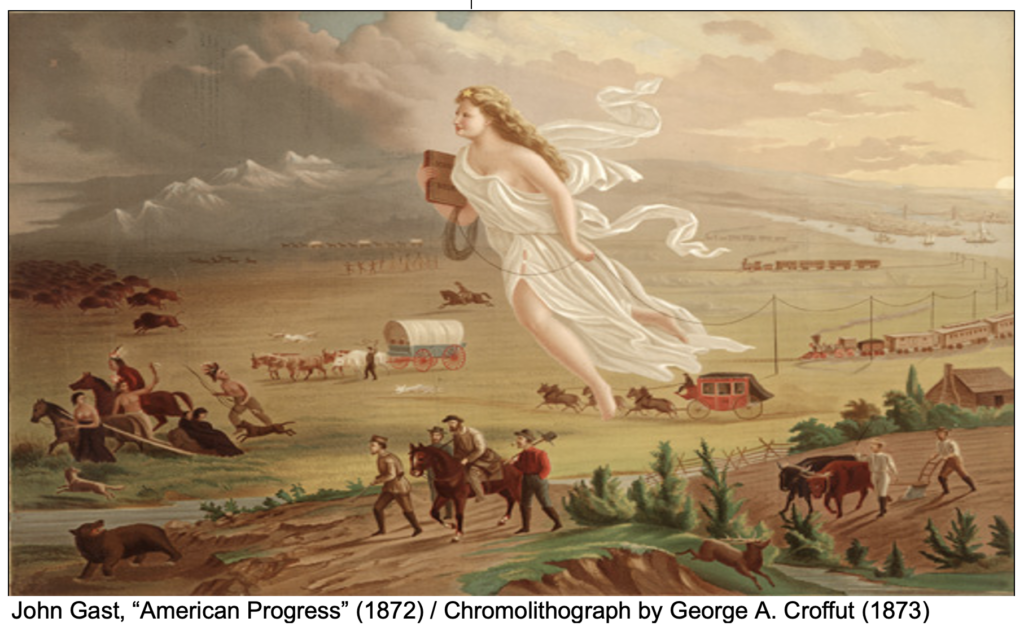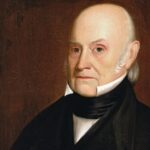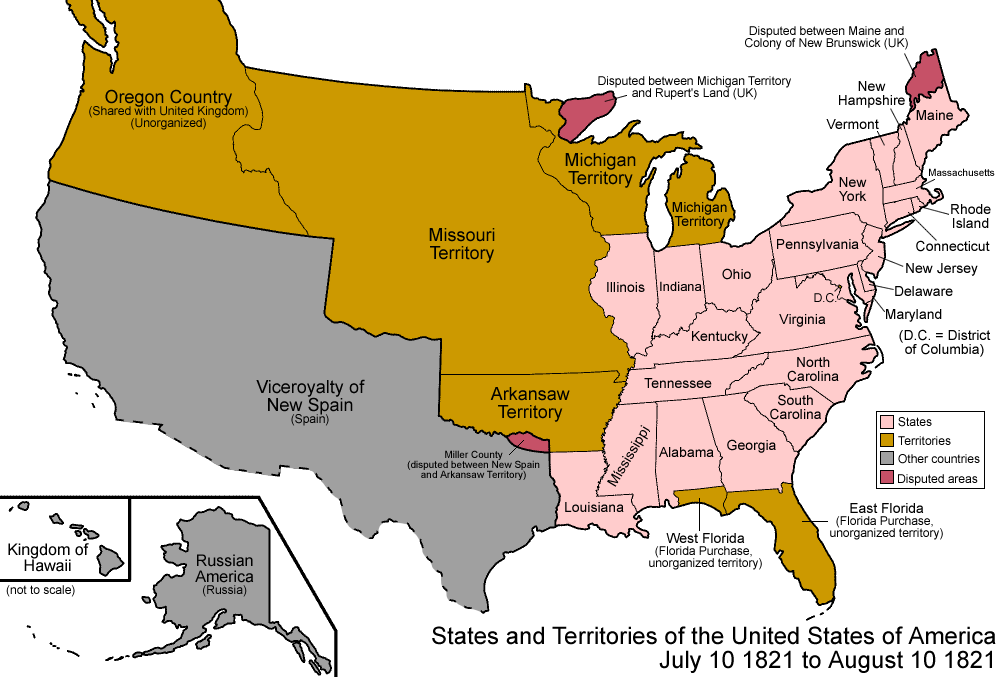Image Gateway
For more information on this famous painting, please see this online piece from Martha Sandweiss
- This painting offers a series of iconic images to represent various stages of US expansion in the nineteenth-century. Try to identify these various images and then speculate about the larger meaning, both perhaps as intended by the painter and as perceived by the audience.
Monroe Doctrine (1823)
The citizens of the United States cherish sentiments the most friendly in favor of the liberty and happiness of their fellow-men on that side of the Atlantic. In the wars of the European powers in matters relating to themselves we have never taken any part, nor does it comport with our policy to do so. It is only when our rights are invaded or seriously menaced that we resent injuries or make preparation for our defense. With the movements in this hemisphere we are of necessity more immediately connected, and by causes which must be obvious to all enlightened and impartial observers….We owe it, therefore, to candor and to the amicable relations existing between the United States and those powers to declare that we should consider any attempt on their part to extend their system to any portion of this hemisphere as dangerous to our peace and safety.
- Secretary of State John Quincy Adams was the true author of the “Monroe Doctrine”
- Adams was responsible for the statement of US interests in the Western Hemisphere that appeared in President James Monroe’s 1823 annual message and was actually a response to an offer from the British to present a joint declaration against potential interventionism by the new Holy Alliance (Russia, Prussia, Austria) in the Western Hemisphere
- Adams was a vigorous advocate for US continental sovereignty but generally a skeptic about asserting US power overseas. His famous July 4, 1821 statement to Congress has long been a credo for those who argue against American imperialism:
Wherever the standard of freedom and Independence has been or shall be unfurled, there will [America’s] heart, her benedictions and her prayers be. But she goes not abroad, in search of monsters to destroy. She is the well-wisher to the freedom and independence of all. She is the champion and vindicator only of her own.
Discussion Question
- How could a diplomatic and politician like John Quincy Adams justify both his cautionary words in 1821 and yet also his assertive hemispheric doctrine in 1823?
Indian Removal (1830-39)
- The Indian Removal Act passed by narrow margins in 1830 (102 to 97 in the House and 28 to 19 in the Senate), the by-product of an increasingly partisan debate between Democrats and Whigs and also the by-product of a growing cultural war between southern populists and northern evangelicals.
- Andrew Jackson lobbied for the Indian Removal Act, but it was his successor, fellow Democrat Martin van Buren who implemented the “Trail of Tears,” or the forced removal of the Cherokee Indians in 1838 and 1839 with up to an estimated 6,000 deaths (Yawp, chap. 12)
- Other “civilized tribes” in the Southeast also faced removal during this period; most ended up in present-day Oklahoma (then Indian Territory) with an estimated 60,000 total forced to migrate westward before the Civil War (Yawp, chap. 12)
Manifest Destiny and Mexican War (1845-1848)
Discussion Questions
- How did the outcome of the Mexican War (1846-48) complicate the efforts to promote “manifest destiny”?
Origins of the term “manifest destiny” (1845)
On Texas (July 1845)
“…other nations have undertaken to intrude themselves into it, between us and the proper parties to the case, in a spirit of hostile interference against us, for the avowed object of thwarting our policy and hampering our power, limiting our greatness and checking the fulfillment of our manifest destiny to overspread the continent allotted by Providence for the free development of our yearly multiplying millions.”
–Excerpted from John L. O’Sullivan, “Annexation,” The United States Magazine and Democratic Review 17 (July 1845): 5–10





